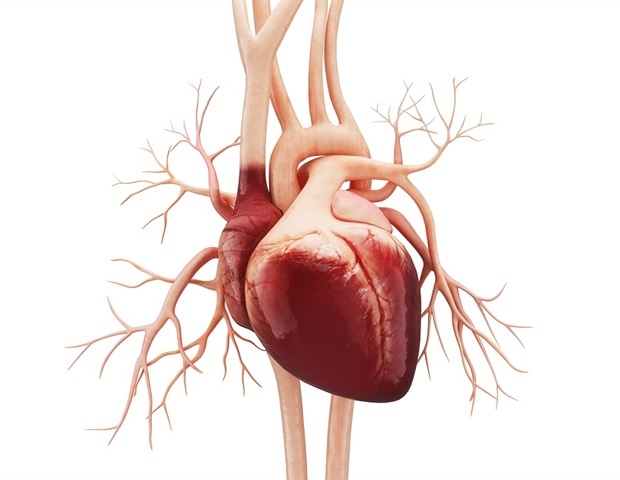
[ad_1]

A group of interventional cardiologists from Henry Ford Well being’s Heart for Structural Coronary heart Illness lately grew to become the primary in the US and the Western Hemisphere to restore a coronary heart valve with extreme tricuspid regurgitation in a affected person utilizing the investigational Okay-Clip™ Transvascular Tricuspid Restore System.
Pedro Engel Gonzalez, M.D., Brian O’Neill, M.D., and William O’Neill, M.D., carried out the 60-minute, minimally invasive, nonsurgical process by way of a small incision within the affected person’s neck with a catheter to achieve the failing coronary heart and positioned the Okay-Clip in a strategic goal location across the dilated tricuspid valve. Underneath the steering of real-time 3D imaging and 4D modeling, the Okay-Clip system shrinks the diseased space across the tricuspid valve to assist the affected person’s valve to operate higher.
The Okay-Clip system is an rising expertise and promising technique for treating choose sufferers with extreme tricuspid regurgitation for whom conventional surgical procedure poses too excessive of a danger.”
Dr. Pedro Engel Gonzalez, M.D., Henry Ford Well being
Frank Konjarevich, an 85-year-old retired shoe and purse restore enterprise proprietor from the Detroit space, is the primary to obtain the brand new expertise. “He’s one in every of many sufferers referred to Henry Ford Well being who desperately wanted intervention for extreme tricuspid regurgitation, who had no different viable choices by way of current therapies accessible within the U.S.,” mentioned Dr. Engel Gonzalez.
Tricuspid regurgitation is a sort of coronary heart valve illness that happens when the valve’s flaps not shut correctly. The tricuspid valve controls the movement of blood from the center’s proper atrium (high chamber of the center) to the precise ventricle (backside chamber of the center). If left untreated, the situation can result in an enlarged coronary heart, signs of fatigue, stomach bloating, mind fog, decrease extremity swelling, shortness of breath, and finally coronary heart failure.
Dee Dee Wang, M.D., director of Structural Coronary heart Imaging at Henry Ford Well being, engineered a 3D printed mannequin of Konjarevich’s coronary heart to offer a life-size roadmap to assist information the intraprocedural imaging and exact placement of the Okay-Clip. The printed mannequin coronary heart was not less than 3 times larger than a standard coronary heart, a transparent signal of the severity of Konjarevich’s situation.
It’s estimated that 1.6 million folks within the U.S. and three million in Europe reside with tricuspid regurgitation which is brought on by cardiomyopathies, left-sided coronary heart failure, or lung illness. The five-year survival price with extreme tricuspid regurgitation and coronary heart failure with lowered ejection fraction (HFrEF) is estimated at lower than 40 p.c.
For a 12 months, Konjarevich had been affected by progressively worsening shortness of breath, fatigue and decrease extremity swelling. Henry Ford physicians found Konjarevich had each leaky mitral and tricuspid coronary heart valve points, which wanted to be corrected in sequence.
Usually, the mitral and tricuspid valve could be handled on the identical time with open coronary heart surgical procedure, nevertheless Konjarevich’s prior coronary heart interventions, medical circumstances and weak point made him too excessive danger for surgical procedure. That’s the place Henry Ford’s Structural Coronary heart group, specializing in minimally invasive transcatheter coronary heart procedures, stepped up.
“We had been capable of restore his leaky mitral valve after which searched worldwide for choices to deal with his leaky tricuspid valve,” mentioned Dr. Brian O’Neill.
“It was a painless process, and I used to be up and across the subsequent morning like nothing ever occurred,” mentioned Konjarevich. “The Henry Ford group was exceptional in every thing they did for me.”
The Okay-Clip process is carried out beneath normal anesthesia and after just a few hours from waking up, the affected person may be strolling round. In Konjarevich’s case, he was capable of go residence the next day.
“I am so happy with him to be so courageous,” mentioned Diane Tapp, Konjarevich’s daughter. “He’s feeling so significantly better, and his enchancment was nearly instantly noticeable by household and mates.”
“Mr. Konjarevich’s leaky valve has improved after the Okay-Clip process and the leakage quantity has been considerably lowered,” mentioned Dr. William O’Neill. “At Henry Ford Well being’s Heart for Structural Coronary heart Illness, we do no matter we will to assist discover options for sufferers with complicated coronary heart circumstances.”
Tapp hopes her father’s pioneering process will assist unfold the phrase to others to achieve out to Henry Ford Well being’s Heart for Structural Coronary heart Illness to discover remedy choices that could be accessible for his or her coronary heart illness.
[ad_2]